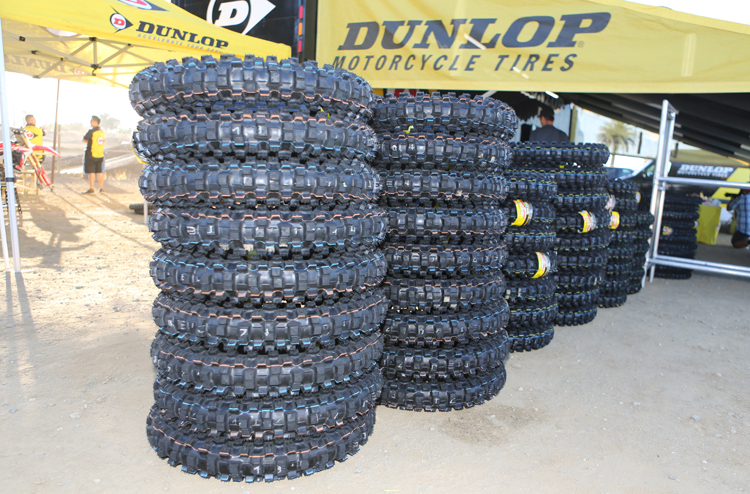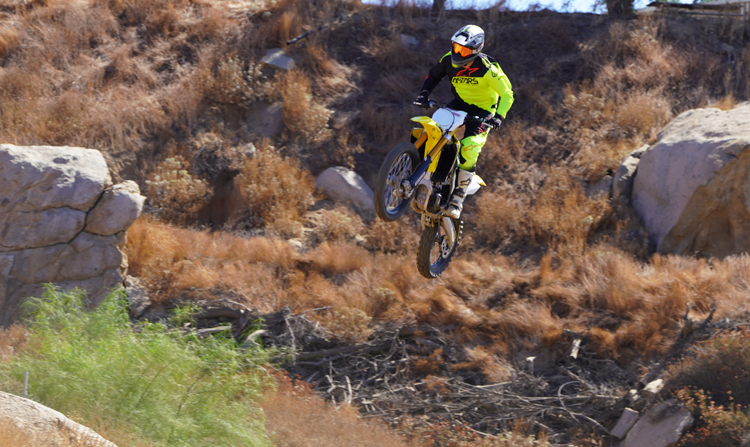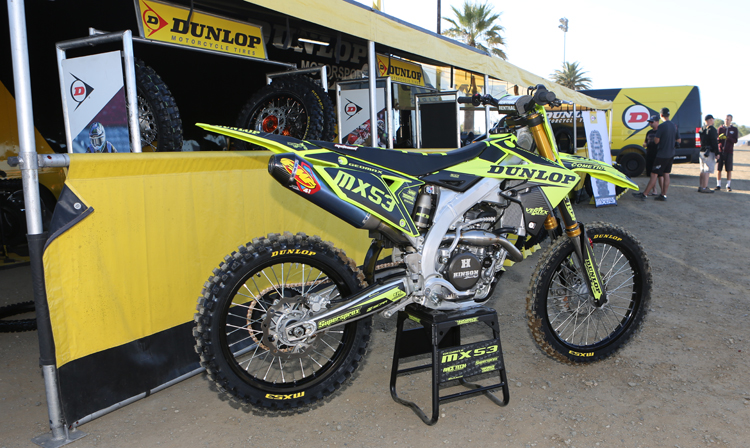Product Launch
All-New Dunlop MX53
Medium to hard terrain tire!
Photos: Donnie Bales @TheWhiskyThrottleShow and Scott Hoffman
Heading out to the famed Perris Raceway in So Cal for the new Dunlop MX53 launch we had no idea what to expect. Since the MX32 launched, later called the 3S and now redesigned MX33, it has been the go-to piece of rubber that a slew of pros have been running in both Supercross and Outdoor Motocross for many seasons. When this tire was launched, it kind of put the then-new MX52 (intermediate to firm) tire on the back burner for racers. At that time Dunlop also dropped the MX71 hard terrain from the line. Yes the MX52 was well used because of its durability but track riders and racers, especially on the West Coast often veered to the MX33 if they were Dunlop fans.

The new MX53 is not a revised tire but all-new tire with new carcasses, tread patterns, and rubber compounds. The difficulty is not building a tire that works well in intermediate to hard pack, it’s getting a tire to work well in those conditions and offer some durability. Very few of us can afford one-ride tires no matter how good they are, especially if the hit is nearly $200 a shot per set. We would guess Dunlop will have special race (works) versions of this tire for Factory or Factory support teams that will last one ride.
For us, the MX52 was not a bad tire but we had some bump-absorption issues and, to be honest, until conditions become really hard packed, the MX3S at the time worked better and had better bump absorption.
Dunlop launched the MX53 with a full line of sizes from 65cc on up including 18- and 19-inch rears. They also added a 120/80-19, a (taller sidewall tire) for 450s, like they did with the MX33.
The idea was to create a tire that would rival the MX33 in intermediate conditions and surpass it as the terrain firms up and even becomes blue-groove. For you spoiled riders that never raced in the ’70s-’80s, you might not know what a real dusty blue-groove track is like. LOL.
Much of the design of a tire is not always in the tread pattern or the knobs, it’s in the guts or the carcass of the tire. The MX53 has a taller and thinner apex/sidewall, which allows for a more controlled flex. From there it’s onto the tread pattern and compound. A tread that has flex, good bite, and does not pack in too much dirt while riding.
From there, it’s onto the knobs themselves. Dunlop has a real offset knob pattern and (block in block pattern) or what they are calling MBD or Multiple Block Distribution for maximum traction and enough flex to grab the ground under the bike.
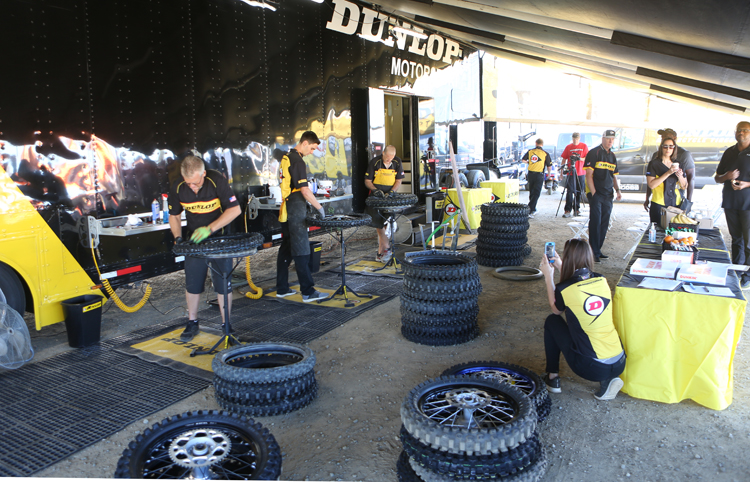
Track Time:
We have years of track time at Perris so we know the dirt and have probably swallowed pounds of it over the years. To be honest, our expectations were so so when we went into this test since the MX3S and later MX33 worked better than the MX52 in nearly all conditions, even firm terrain.
We rode a 2020 Suzuki RM-Z450 at the test and because it comes with a standard size 110 tire, Dunlop ended up putting a 110 on our 450. We normally run 120 series tires on 450s. I moaned a little trying to get a 120 and they said just go ride, which I did. The track was ripped and tacky in the morning and I was surprised how well the tire stuck and how much traction I had with the 110 rear. The tires just worked…and worked well. I was expecting a little slip and slide and push until the ground firmed up but there was none at my speed. The track was prepped well and not totally soupy but there was moisture in the dirt.
On our second session as the track firmed up as it always does, the front tire was the most impressive. Even on the RM-Z, which has a firm front fork, the front tire really soaked up the bumps and the braking performance was really good. Also, trail braking into a turn I never felt the tire snap out of traction quickly, if it did push slightly, it was very controlled. And toward the end of the day when conditions were full hard pack even with some dust, the tires kept up their performance. If I was riding the MX33 at this time of the day I had to be a little more cautious as the ground was getting out of the range for this tire. The front tracked well and stayed planted in ruts and I did not feel any under or oversteer.
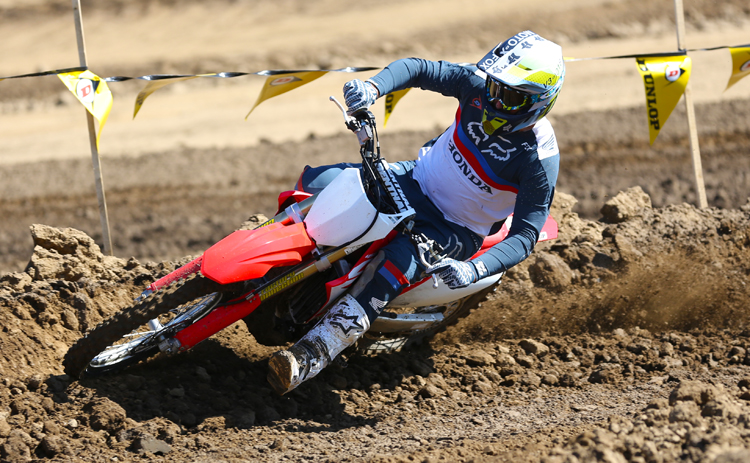
The rear just worked, I kind of didn’t really notice it until I thought about it, which is a really good feeling. I never worried about breaking traction while exiting turns, abrupt spinning of the rear wheel, or deflection. I was impressed with the 110 on the rear and it actually made the RM-Z feel a little lighter, although I would like to also test the 120 version as well down the line.
Be aware, we only spent a half day on the track because of the press information session, tasty lunch, and the fact the track closed at 2pm that day. However, I was really impressed with the new MX53. I was so impressed I am already considering this as my new go-to tire 60%-70% of the time. Now if we get a solid rain during the week or during some of those cool winter days at the track where the dirt is loose and moist all day, or if we go up to a sandy track like LACR in the winter months, I would go back to the MX33. Thus far, the new MX53 holds its own in intermediate conditions and really shines as the dirt starts to firm up and form ruts. After about an hour on the new tire at Perris, even riding in slightly dusty hard pack, the rear tire showed very little signs of wear and the leading knob was still very sharp.
It doesn’t even matter if you are a Dunlop fan or not, this is a tire you have to try, so far we like its consistent feel and performance. Now Dunlop finally offers two solid choice of tires—the MX33 and the much-improved MX53. Although the two do crossover to some degree, the MX53 is now a more viable option than ever before.
Support DBT by sharing the our videos and shopping and searching through the links below:
